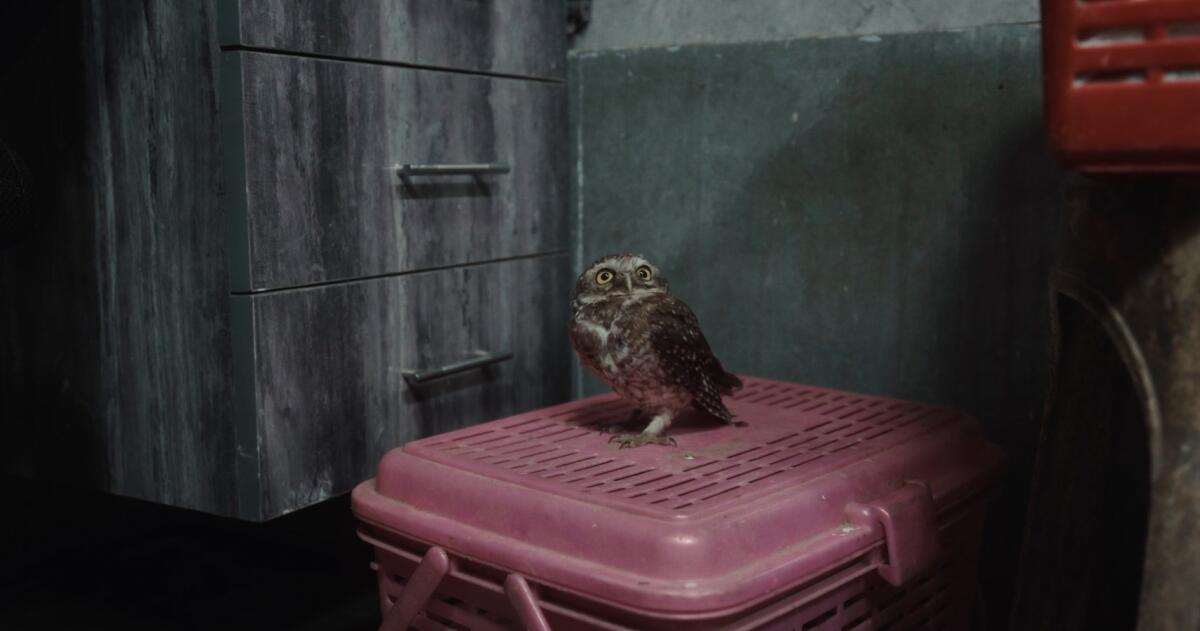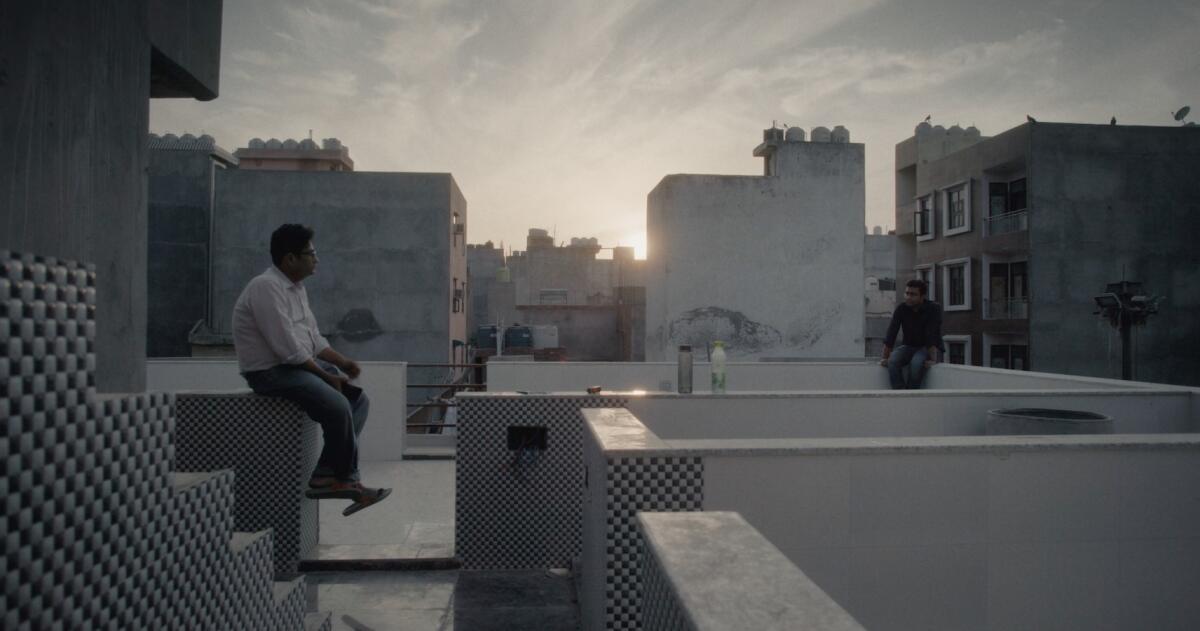Review: These New Delhi brothers heal ‘All That Breathes’ in extraordinary documentary

In industrially choked New Delhi, ever-worsening skies send migratory birds of prey plummeting to the earth — and if they’re lucky, where they can be found by a pair of Muslim brothers who, in a makeshift basement clinic on a dilapidated, narrow street, can nurse them back to flying strength.
“All That Breathes,” Shaunak Sen’s extraordinary documentary about amateur bird medics Nadeem Shehzad and Mohammad Saud, operates in a transfixing liminal space — one where repair heals not only the wounded creature, but the human being briefly tending to it, and also clarifies a precipitous moment of ecological and societal change. That attention to the macro and micro infuses nearly every frame of this nonfiction masterwork, which earned prizes at Sundance and Cannes this year and is maybe the most beautifully realized documentary in recent memory.
For your safety
The Times is committed to reviewing theatrical film releases during the COVID-19 pandemic. Because moviegoing carries risks during this time, we remind readers to follow health and safety guidelines as outlined by the CDC and local health officials.
Studiously avoiding the wildlife heart-tugger template or environmental clarion call, this eloquent film takes us inside the brothers’ purposeful lives with a precision and artistry that defies easy categorization but only ever feels humane and present. It’s more like a powerful short story built of concentrated moments that, piece by vivid piece, paint for us a sense of the world, in this case one where an imperiled interspecies coexistence matters most.
The carnivorous black kite has a spiritual connection to Muslims, who believe tossing meat to these hawks cleanses the feeder. The kites are also an essential part of Delhi’s ecosystem, having adapted from being traditional hunters to scavengers chipping away at the region’s epic garbage mountains. As boys, the brothers were taught by their mother to respect “all that breathes,” but when they tried to help a fallen kite, they also learned that the local animal hospital felt differently, refusing to accept “non-vegetarian” birds.
They began fixing up the damaged raptors themselves, using anatomical knowledge learned from studying to be — of all things — bodybuilders. They’ve since mended upward of 20,000 birds, and, at the time we meet them, they’re trying to land foreign funding to build a true hospital. (A soap dispensary business keeps them afloat.)

In their cramped workspace, they’re prone to deadpan humor (usually at the expense of wide-eyed assistant Salik Rehman), quarreling (as brothers do), and in interviews used as voiceover, calm philosophizing about their specialized urban mission. Their dedication, however, is unwavering, and we sense the birds — long accustomed to sharing Delhi with humans — might even grasp that. Early on, a majestic tracking shot inside their rooftop cage displays a stunning menagerie of stoically perched, recovering patients, waiting until they can get back to floating, circling, maybe swiping the glasses off someone’s head — which, incredibly, the camera captures on the roof happening to a startled Rehman. If it came down to it, he half-jokingly muses to his bosses later, “will they eat us?”
The real threat to these avian caregivers, however — heard in the occasional news report snippet — is that discrimination against Muslims is sparking violence with increasing regularity. That the brothers must sometimes sit outside their house at night when unrest builds is like some ground-level, human version of that bird on a ledge, protecting a nearby nest. The ravages of industry aren’t the only producers of toxic air.
Throughout, Sen and cinematographers Benjamin Bernhard (who shot the incredible water film “Aquarela”), Riju Das and Saumyananda Sahi layer the elegant vérité with evocatively poetic compositions — usually a revelatory rack focus shot or slow pan — that act like ecological markers of species endurance as it exists in Delhi today: a turtle navigating a trash mound under the din of distant motorcycles; a caterpillar near standing water that reflects an airplane overhead; a foregrounded slug with a raging fire in the background. The human beings also at times feel closely observed.
But as deliberate as the image-making often is, it’s always to train us in looking as the brothers do, to consider the breadth of life and interconnectedness in our world: Wherever you are, “All That Breathes” is asking, can you see what’s there, what needs your attention?
'All That Breathes'
In Hindi with English subtitles
Not rated
Running time: 1 hour, 34 minutes
Playing: Starts Oct. 28, Laemmle Royal, West Los Angeles
More to Read
Only good movies
Get the Indie Focus newsletter, Mark Olsen's weekly guide to the world of cinema.
You may occasionally receive promotional content from the Los Angeles Times.










